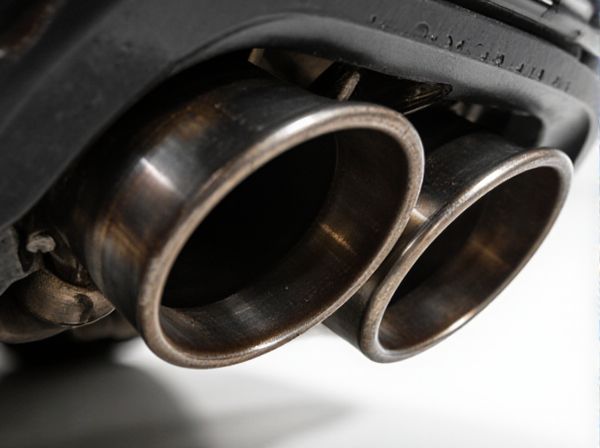
Photo illustration: Slip-fit joint vs Flanged joint
Slip-fit joints offer a simple, cost-effective connection by sliding one pipe inside another, providing moderate sealing suitable for low-pressure applications. Flanged joints use bolted plates with gaskets to create a robust, leak-resistant seal ideal for high-pressure or high-temperature systems. Your choice depends on factors like system pressure, ease of maintenance, and leak prevention requirements.
Table of Comparison
| Feature | Slip-Fit Joint | Flanged Joint |
|---|---|---|
| Design | Overlapping pipe sections | Bolted connection with flanges |
| Installation | Quick and simple, requires less tools | More complex, requires bolts and proper alignment |
| Sealing | Uses clamps or welds for sealing | Uses gasket for high-quality seal |
| Durability | Moderate, potential for leaks over time | High, strong mechanical joint minimizes leaks |
| Maintenance | Easier to disassemble but less secure | Requires unbolting, more secure connection |
| Cost | Lower initial cost | Higher cost due to parts and labor |
| Application | Common in aftermarket exhaust systems | Preferred in OEM and performance exhausts |
Introduction to Slip-Fit and Flanged Joints
Slip-fit joints and flanged joints are common mechanical connections used in piping and structural applications. Slip-fit joints rely on one pipe or tube sliding into another with a tight interference or clearance fit, providing easy assembly and alignment without the need for additional fasteners. Flanged joints involve connecting two components with flanges bolted together, ensuring a secure, leak-proof seal suitable for high-pressure environments.
Overview of Slip-Fit Joint Design
Slip-fit joint design features a cylindrical male end that slides into a matching female socket, relying primarily on precise tolerances for alignment and a tight fit. This joint type facilitates quick assembly and disassembly, commonly used in piping systems where minor angular flexibility and vibration resistance are required. Slip-fit joints often incorporate seals or adhesives to enhance leak prevention and mechanical stability under operating pressures.
Overview of Flanged Joint Design
Flanged joint design features a bolted connection method where two flanges, typically made of metal, are joined with a gasket in between to ensure a leak-proof seal under high-pressure conditions. This design facilitates easy assembly and disassembly, making it suitable for pipelines, valves, and pressure vessels in industries such as oil and gas, petrochemical, and water treatment. The flange dimensions, bolt patterns, and gasket types are standardized by organizations like ASME, ANSI, and API to guarantee compatibility and reliable performance across various applications.
Material Compatibility and Selection
Slip-fit joints offer superior material compatibility by allowing easy assembly of dissimilar metals through controlled interference fits, minimizing galvanic corrosion risks. Flanged joints require careful selection of gasket materials to ensure chemical resistance and mechanical strength between flange faces, making them suitable for applications with varying pressure and temperature conditions. Selecting the appropriate joint type depends on the material's thermal expansion properties and environmental exposure to optimize joint durability and performance.
Installation Process and Tools Required
Slip-fit joints require precise pipe alignment and minimal preparation, utilizing basic tools such as pipe cutters, deburring tools, and lubricants for smooth insertion. Flanged joints demand more complex installation with the use of wrenches, torque tools, and gasket materials to ensure a tight seal between the flange faces. The slip-fit process is generally quicker with fewer tools, while flanged joints require detailed alignment and bolt tightening for secure assembly.
Sealing Performance and Leak Prevention
Slip-fit joints provide moderate sealing performance by relying on gasket compression within the joint, making them suitable for low-pressure applications but less effective in preventing leaks under high pressure or thermal cycling. Flanged joints offer superior leak prevention through bolted connection and robust gasket sealing, ensuring consistent compression and resistance to vibration and pressure fluctuations. The enhanced sealing integrity of flanged joints makes them ideal for critical systems requiring reliable, long-term leak tightness.
Strength and Mechanical Performance
Slip-fit joints offer moderate strength due to their interference fit, allowing slight flexibility and ease of assembly, but may underperform under high mechanical loads compared to flanged joints. Flanged joints provide superior mechanical performance with high-pressure resistance, robust sealing capabilities, and enhanced structural integrity, making them ideal for demanding applications with significant stress and vibration. The bolted connection in flanged joints ensures uniform load distribution and minimizes the risk of joint failure in dynamic environments.
Maintenance and Repair Considerations
Slip-fit joints offer easier maintenance and quicker repair due to their simple assembly, allowing individual sections to be replaced without dismantling adjacent components. Flanged joints require more time and tools for disassembly, but provide better sealing under high pressure, reducing the frequency of repairs. Both joint types necessitate regular inspection for gasket wear and bolt integrity to ensure long-term reliability.
Cost Analysis: Initial and Lifecycle
Slip-fit joints feature lower initial costs due to simpler manufacturing and installation processes, reducing labor and material expenses. Flanged joints, while more expensive initially due to the cost of flanges and bolts, offer easier maintenance and replacement capabilities, which can decrease lifecycle costs in long-term applications. Lifecycle cost analysis often favors slip-fit joints in short-term projects but leans toward flanged joints for durability and cost-efficiency over extended operational periods.
Choosing the Right Joint for Your Application
Slip-fit joints offer ease of assembly and are ideal for applications with limited space or where quick installation is critical, providing a secure yet flexible connection. Flanged joints, known for their robust sealing and resistance to high pressure and temperature, are preferred in systems requiring frequent maintenance or heavy-duty performance. Selecting the right joint depends on factors such as operating conditions, mechanical stress, accessibility, and maintenance frequency to ensure optimal functionality and longevity.
 caratoz.com
caratoz.com